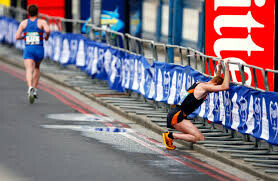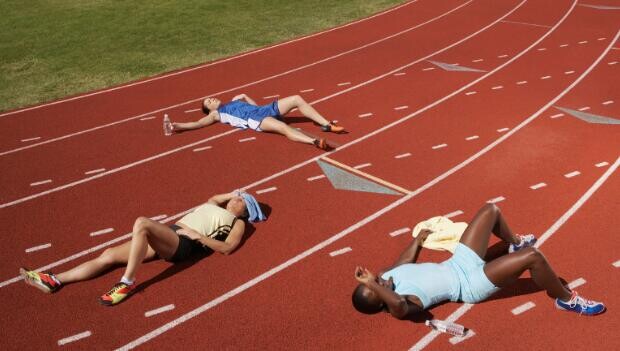Running News Daily
Running News Daily is edited by Bob Anderson. Send your news items to bob@mybestruns.com Advertising opportunities available. Train the Kenyan Way at KATA Kenya and Portugal owned and operated by Bob Anderson. Be sure to catch our movie A Long Run the movie KATA Running Camps and KATA Potato Farms - 31 now open in Kenya! https://kata.ke/
Index to Daily Posts · Sign Up For Updates · Run The World Feed
Why a DNF could be your best learning tool, here's how to use a bad race to your advantage
So you dropped out of a race–what can you learn from it? You may be surprised what you are able to take away from a less-than-ideal experience.
If you enter enough races, you’re bound to experience one that doesn’t go as planned. A DNF (did not finish) result can initially be heartbreaking, especially if you’ve been working up to your race for a long time. You can do everything possible to prepare for an event and still have a race day that doesn’t go well, particularly in longer distances like marathons or ultras. Stomach problems, hot weather, shoe issues—reasons for a DNF are wide-ranging. If you need a day to process your disappointment after a bad race, go for it: but no longer than that.

Revisiting your experience and looking at what you can learn from it can be a game-changer. You will head into your next race with greater insight, new ways to tackle problems and the mental toughness from experience that you simply wouldn’t have gained without struggle.
Consider where the problem started

Did you veer off your regular pre-race meal routine when out of town? Maybe you need to plan ahead so that you can have food you’re comfortable with available. Perhaps you went into the race without enough rest, or chose the wrong shoes for a particular course. By revisiting your race and looking for clues to where problems were initiated, you’ll often see that mistakes were made before you even laced up your shoes. Finding that critical first error can be helpful as you figure out how to spin your experience from a negative to a positive.
Pinpoint your weaknesses
It is easy to avoid reflecting on problem areas. For me, after running a race and becoming quite ill afterward with heat exhaustion, it was tempting to chalk it up to the weather, and not alter any of my training habits. Instead, I decided to take a good look at what I had failed to do during the race to adapt to warmer temperatures and increased hydration needs. As in many things, awareness is key. Make a list, and don’t be afraid to do the work: being honest with yourself about areas to improve is key to becoming a better runner. If you determine that your taper was inadequate, do some research and ask others for tips and suggestions.
Figure out what you need to change, and get to work
Now that you have an idea of things to work on, put them into practise now. If your problems were with nutrition, start troubleshooting nutritional strategies on long runs, or try out new food prior to training runs. Far better to have something go wrong during a training run than in a much-anticipated race. Digestion has always been one of my own challenges in longer races, so now I work on this on almost every run. Just being conscious of what I was eating before and after a run and noticing how it affected my performance was hugely beneficial to my race-day performance. The knowledge gains also gave me a pre-race boost in confidence.
A coach once told me that the only time a DNF was a bad thing was when the athlete didn’t make the experience an opportunity for growth. Sure, a poorly executed race day feels unpleasant at the time, but viewing it as a tool to enhance your future performance can turn it into a stepping-stone on the way to your next PB.
by Keeley Milne
Login to leave a comment




